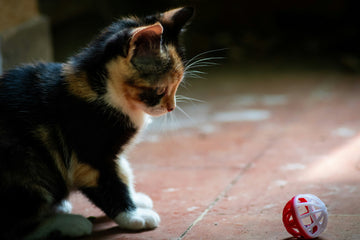It’s been over 10,000 years since cats decided humans were worthy of their company. In that time, they’ve gone from wild hunters stalking prey in the tall grasses to pampered pets curled up on window sills. And while our modern felines have traded the wilderness for warm laps and cozy cushions, one age-old instinct still remains: the thrill of the hunt.
Unfortunately, most indoor cats don’t get to flex those natural hunting muscles anymore. Instead, they snack. They nap. Then snack again.
It’s no wonder, then, that feline obesity has become one of the most pressing health concerns among our modern-day mini lions.
The Truth Behind the Fluff
Sure, we love a chubby tabby meme as much as anyone, but the reality isn’t quite so funny. Extra weight puts stress on your cat’s joints, heart, and even their mood. Conditions like diabetes, arthritis, and cardiovascular issues are far too common—and often, preventable.
So how do we help our cats shed the fluff while still keeping their spirits high?
It comes down to three essential questions:
1. What’s in the Bowl?
Think of your cat’s food like your own dinner plate. You wouldn’t eat fast food every day and expect to feel great, right? The same logic applies to our feline companions. High-carb, filler-heavy foods might fill a belly, but they don’t fuel a healthy body.
Working with your vet to choose a diet high in quality protein, with fewer unnecessary additives, is the first step toward healthier weight and better energy levels.
2. How Much Are They Eating?
Imagine placing a pizza in front of a child and saying, “Eat as much as you want, whenever you want.” Chaos, right?
Cats aren’t much different. Left with a full bowl, many will graze all day out of boredom rather than hunger. This is where timing and portion control make a world of difference.
Timed feeders or daily meal routines help manage intake—but for even better results, you might want to consider letting your cat work for their food, just like their ancestors did.
3. How Are They Eating?
Here’s where things get fun.
In the wild, food isn’t simply handed over. Cats stalk, pounce, claw, and outsmart their prey. That activity doesn’t just burn calories—it keeps their minds and bodies sharp. Sadly, the average house cat’s “hunt” ends at a ceramic bowl.
That’s why more and more pet parents are turning to enrichment toys that merge feeding time with playtime. Puzzle feeders and interactive toys provide the stimulation indoor cats crave. Not only do they slow down eating, but they also awaken your cat’s inner explorer.
One such toy from the Bobopal collection offers exactly that kind of challenge. Crafted with sustainability in mind and designed to simulate foraging behavior, it invites cats to paw, nudge, and think their way to treats. For some felines, it’s just a toy. For others? It’s a game-changer in their health journey.
Your Cat’s Health is in Your Hands (and Their Paws)
Whether your kitty is already tipping the scales or you’re simply aiming to prevent future weight gain, these small shifts—better food, smart portions, and playful mealtimes—can make a big impact.
Remember: a happy cat isn’t just a full cat—it’s an engaged, active, and stimulated one.
Because beneath all that fluff still lives a little wild hunter. All she needs is the chance to play like one.






